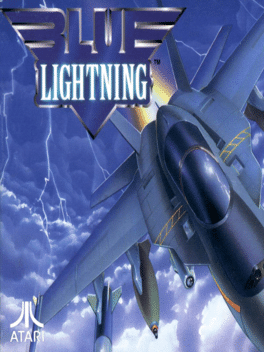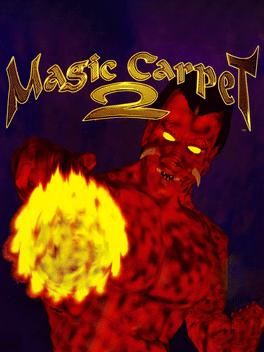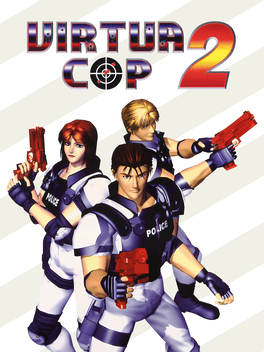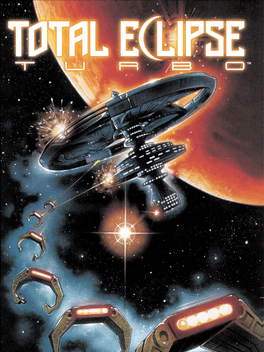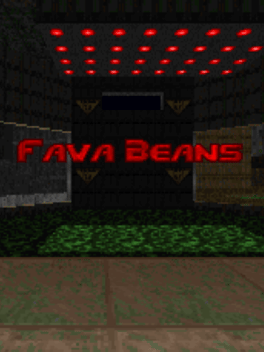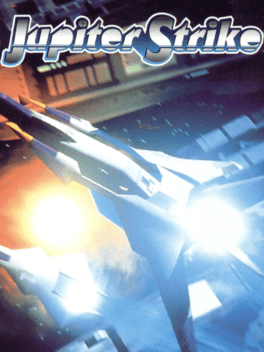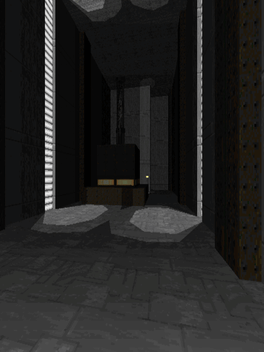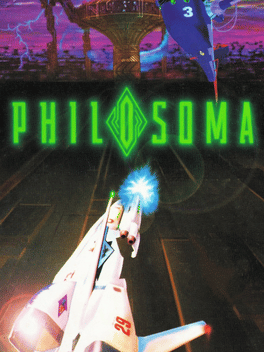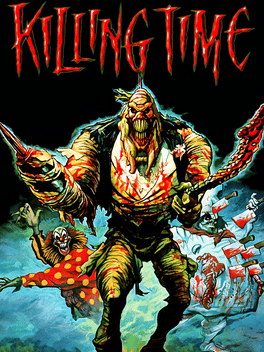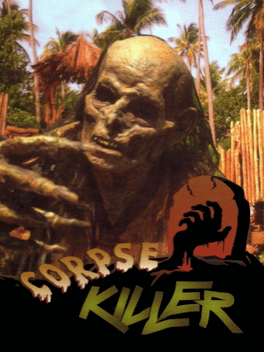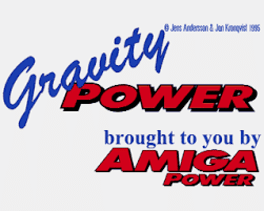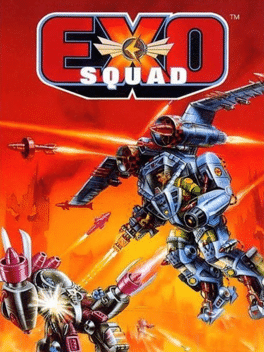New Wii Games - Page 372
-
Blue Lightning
1995
Blue Lightning
1995
Blue Lightning is a combat flight simulation video game developed by Attention to Detail and published by Atari Corporation exclusively for the Atari Jaguar CD on September 21, 1995. It is a remake of Epyx's 1989 Atari Lynx title of the same name and was, alongside Vid Grid, one of the pack-in games for the peripheral when it launched. Assuming the role of a rookie aircraft pilot from the Blue Lightning squadron, players take control of multiple military aircraft on various missions in order to stop General Drako, who betrayed the United Nations and slowly gained control of many armed forces through corruption to expand his organized crime empire on all over the world. Originally advertised as a sequel to the Atari Lynx original, Blue Lightning had a troubled development cycle and went through various changes before release. Similarly with Cybermorph, an early game for the Jaguar created by its main developer, Blue Lightning received divisive reviews when it launched. While it received praise for its soundtrack, -
Magic Carpet 2: The Netherworlds
1995
star 8.4Magic Carpet 2: The Netherworlds was the follow-up of the successful yet underrated game, Magic Carpet. It fixed many of the design complaints present in the first Magic Carpet. The basic concept of the game remains the same as Magic Carpet, with the player being able to build a castle, collect mana, destroy creatures for their mana and battle rival sorcerers. It featured the addition of night-time levels, and underground levels, which not only helped alleviate the repetitiveness of the preceding game, but also accompanied the storyline progression, which was mapped out before each level. Underground levels, however, do not have rival wizards. There are also several secret entrances to reach hidden levels, where the player can gain more spells and experience. Also unlike its predecessor, the game proceeded by completing various missions such as reaching checkpoints and destroying specific buildings/monsters, rather than just simple accumulation of mana. -
Doom
1995
Doom
1995
star 8.6The Super Nintendo version of Doom was published by Williams Entertainment on September 1, 1995, near the end of the system's life cycle. This is the first SNES title rated M for mature, and one of only three rated as such (the others being Mortal Kombat 3 and Ultimate Mortal Kombat 3, coincidentally also published by Williams Entertainment, Inc.). The cartridge features a Super FX 2 chip, and Doom was one of few SNES games to feature a colored cartridge; the NTSC release was available in a red casing. The game does not use the Doom engine, but features a custom engine, known as the Reality engine, programmed by Randy Linden. -
Virtua Cop 2
1995
Virtua Cop 2
1995
star 7.2During the events of the first, the original Virtua Cops, Michael "Rage" Hardy and James "Smarty" Cools shut down the E.V.I.L Inc. criminal empire. Three of its leaders, King, Boss, and Kong are all in the maximum security federal pen. And the final, fourth member of the E.V.I.L Inc. gang, international terrorist Joe Fang is believed to have been killed in a helicopter crash, though his body was never found. After the downfall of E.V.I.L Inc., a comprehensive investigation of their black market and gun-running activities was launched in the Virtua City bank. Last year it looked as though the Virtua Squad had finally put an end to the E.V.I.L Syndicate’s reign of crime over Virtua City. The gangleaders were all either behind bars, in intensive care, or under 6 feet of dirt. And the Virtua City Police Special Investigations Unit got a new member in the shape of Janet Marshall, an expert in criminal psychology profiling. Then trouble started brewing in unlikely places.... The vice-president of the Virtua City Bank w -
Crusader: No Remorse
1995
Crusader: No Remorse
1995
star 7.3As a Silencer, one of the elite enforcers of the World Economic Consortium, you're supposed to be incorruptible. But if the system you serve is utterly corrupt, where does that leave you? You go over to the Resistance, the same pack you used to hunt down. Now your former employers better watch their backs because you're coming after them with all the firepower at your command. No pity. No mercy. No Remorse -
Total Eclipse Turbo
1995
Total Eclipse Turbo
1995
Total Eclipse Turbo is a port of the space shooter Total Eclipse. A sequel Solar Eclipse (Titan Wars in Europe) was released for the Sega Saturn and PlayStation. In Total Eclipse Turbo, gamers must defend Earth's sun from an invading band of baddies knows as the Dras-sai. To be successful in your mission, players must navigate their character through four objective and 20 rounds of alien annihilating action. Players may blast on the enemy aliens with weapons including plasma bombs and a handful of blasters. -
Fava Beans
1995
Fava Beans
1995
Fava Beans is a Doom episode replacement mod of nine levels, created by Sean Birkel, with one level from Ben Gates -
Jupiter Strike
1995
Jupiter Strike
1995
star 2Jupiter Strike is a 3D shooter where you control a ship flying through space and have to battle multiple waves of aliens, asteroids, fly across planets, inside space stations and battle huge enemy bosses. The game only allows you limited movement of your ship, allowing you to focus on targeting and destroying as much as you can in your path. -
Alleys
1995
Alleys
1995
The end of the Callisto campaign should have meant well-earnt retirement for you, marine. -
Ye Olde Smudge
1995
Ye Olde Smudge
1995
Ye Olde Smudge is a 1995 Heretic mapset by Christen Klie consisting of three levels. -
The Basement
1995
The Basement
1995
This is the basement of a large power plant recently taken over. Several Space Marines have already failed to retake. It is crucial that this plant not remain in enemy hands. It is reported that there are spiders in the basement... -
Philosoma
1995
Philosoma
1995
star 5In Philosoma, you blast through 18 vertical scrolling deep space environments in search of the mysterious distress call, destroying enemies and obstacles in your path. Go up against a variety of vehicles including the "Hover Carrier," the "Makkon," and the "Missile Walker" as you clear your way with one of four main weapons such as the Vulcan, Laser, A-Break, or Ray-B. Each weapon can be upgraded up to three times when specific power-up icons are collected. A secondary weapon such as Buster grenades, MRMs, and SRMs are equipped at the beginning of a level or acquired through a power-up. -
Aqua 1
1995
-
Caravan Shooting Collection
1995
Caravan Shooting Collection is a 1995 Super Famicom compilation of classic shoot 'em up games from 1985 to 1987 that were originally released on the Nintendo Entertainment System. The games include the 1985 Famicom port of Star Force (the Arcade version was originally created by Tecmo, but the home port was developed by Hudson), 1986's Star Soldier and 1987's Hector (a.k.a. Starship Hector). All three of these games were the subjects of the Hudson All-Japan Caravan Festival, which for a long time hosted a new Hudson shoot 'em up every year and traveled around Japan with competitors in different prefectures attempting to earn the highest scores. The game would then be available for sale shortly before or after the competition, which helped raise its profile. -
Killing Time
1995
Killing Time
1995
A sophisticated shooter laced with gallows humor. Killing Time is no shallow grave. Its depth is well-conceived. Puzzle solving and strategic thinking are placed at a premium. -
Corpse Killer
1995
-
Gravity Power
1995
Gravity Power
1995
Gravity Power was a specially licensed version of Gravity Force II for the staff of Amiga Power magazine. As such it was only released on that magazine's issue 50 cover disk. It features single player missions and a 2-player multiplayer mode. The aim is to pilot a spacecraft through subterranean caverns avoiding enemy fire. The ship is subject to gravity and inertia and colliding with terrain or the walls of the cave results in destruction of the ship. -
Exo-Squad
1995
Exo-Squad
1995
The player alternatively assumes the roles of three members of the Able Squad: Lt. J.T. Marsh, Sgt. Rita Torres and Wolf Bronsky. -
Viper Phase 1
1995
Viper Phase 1
1995
By the year 2050, mankind begins the colonization of multiple solar systems in search for habitable planets. However, while the colonists establish original cultures and scientific studies, many of them began feuding with each other and battles broke out among them and the Earth. One rebel faction in particular rose to great power and made Earth their primary target. Earth's response was Operation Viper Phase 1: to combat the rebels using advanced space fighters built from downed enemy ships. -
The Waterfront
1995
The Waterfront
1995
The Waterfront (Wtrfront.Wad) is a level created by Scott F. Crank in May 1995. It is often considered the earliest level to deliberately exploit the ghost monster bug, which its text file calls the "arch-vile bug"
